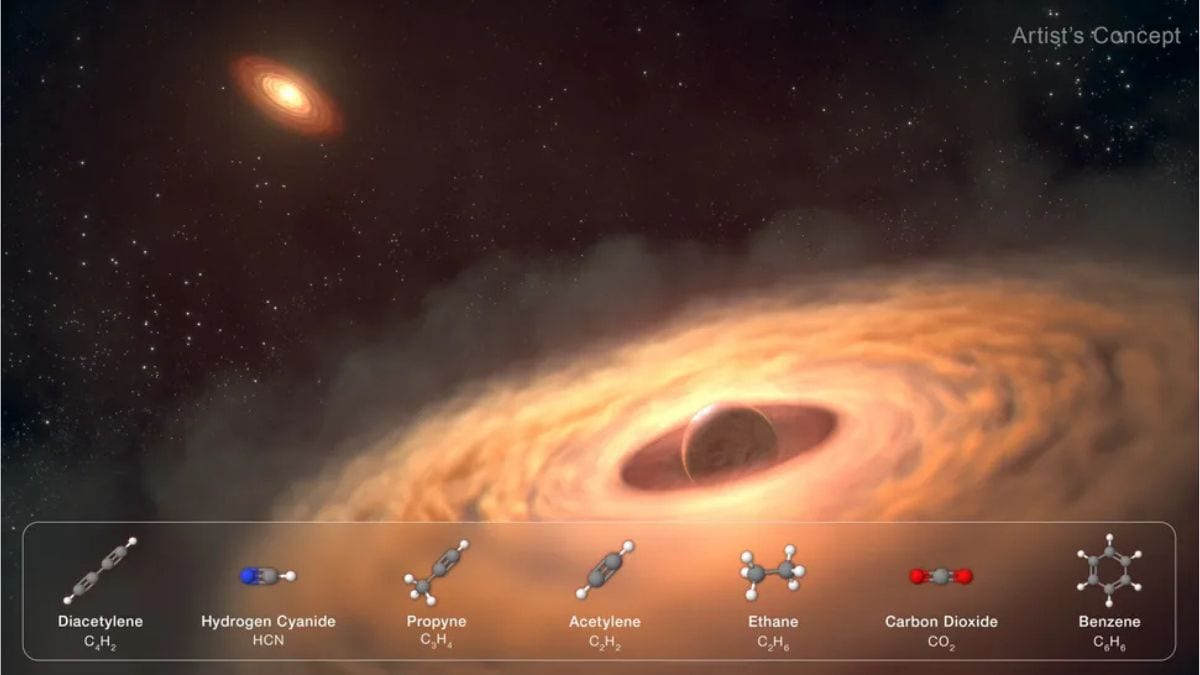The James Webb Space Telescope has provided scientists with their clearest picture yet of how moons might form around distant worlds. By using its remarkable mid-infrared spectrograph, the observatory identified that a cocktail of carbon-bearing molecules in a disk of gas and dust circling CT Cha b, a body that is 17 times heavier than Jupiter. Located 625 light-years away in the constellation Chamaeleon, CT Cha b orbits a young star two million years old. Researchers trust that this chemical-rich disk can contain the notable elements for building moons.
Webb Unveils Carbon Chemistry in Distant Moon-Building Disk Around CT Cha b
As per The Astrophysical Journal Letters, the Webb telescope mapped out acetylene, benzene, carbon dioxide, ethane, hydrogen cyanide, and more. These elements are expected to accelerate the growth of moons. It is much likely to those orbiting Jupiter and Saturn in our own solar system. Lead researcher Sierra Grant mentioned the findings needed painstaking evaluation. Moreover, the data finally confirmed what earlier hints had suggested: a moon-forming disk rich in complex carbon chemistry.
CT Cha b orbits its star at 440 astronomical units, far enough for clear direct imaging without stellar glare, making it an ideal Webb target. While its planet-forming disk once seemed carbon-poor, scientists found its moon-forming disk has developed rich chemistry over the past two million years.
Webb is enabling astronomers to observe moon formation in real-time, according to co-author Gabriele Cugno. This allows for insight into the materials contributing to the formation of planets and moons and presents opportunities to compare moon-forming disks in other systems to determine the commonality of this chemical evolution.
Though no exomoons have been directly detected, astronomers suggest they may outnumber planets. The study of CT Cha b offers clues to a likely common moon-forming process, and researchers plan wider surveys to refine models of celestial formation.

Comments
Post a Comment